Valencia
Top Tourist Attractions in Valencia
In a dreamy seaside setting, this balmy Mediterranean port town lives up to the local saying "a piece of heaven fallen to earth." Under the warm rays of the southern sun, the town's palm-fringed plazas are full of life, and its churches sparkle with brightly colored azulejo domes. As the old capital of the kingdom of Valencia, the city is rich in cultural heritage. Magnificent historic monuments, such as the 15th-century Silk Exchange, the 18th-century Marquise Palace, and the Museum of Fine Arts, tell the story of a wealthy merchant and aristocratic past. Yet Valencia has entered the 21st century with gusto. The sleek Modern Art Institute, along with the futuristic City of Arts and Sciences immerse visitors into a brave new world of artistic and scientific discovery.
1 Ciudad de las Artes y las Ciencias
Tourists can experience a cutting-edge world of arts and sciences at this futuristic complex on the outskirts of Valencia. The Ciudad de las Artes y las Ciencias is one of Europe's most impressive centers dedicated to cultural and scientific exhibitions. In a two-kilometer space along the Turia River, the complex includes several stunning examples of avant-garde architecture designed by architects Santiago Calatrava and Félix Candela. The Ciudad complex has six main areas: the Hemisfèric IMAX Cinema that screens digital films; the Umbracle landscaped area with excellent views; the Príncipe Felipe Science Museum, an interactive science museum; the Oceanogràfic aquarium; the Reina Sofía opera house, and the Agora concert space. The City of Arts and Sciences also hosts conferences, exhibitions, and workshops related to science and art topics.
2 Las Fallas Festival
Every year in March, Valencia becomes a scene of joyous celebration during the Fiesta de San José (Feast Day of Saint Joseph). This lively religious festival is known for its creative installations called fallas, large floats featuring figures made of papier mâché. These creations are set up in the streets and then burned at midnight on the last day of the fiesta. The custom originated in the Middle Ages, when carpenters and other craftsmen would burn leftover scraps of wood and other materials on the feast of Saint Joseph.
The Museo Fallero (Fallas Museum) is a good way to experience some of the energy of this event if you visit in another season. Here are examples of the ninots (figures) that have been saved by popular vote. It is also interesting to see how the ninots have evolved with technology, from early wax figures dressed in real clothes to modern ones made of papier-mâché and most recently of polystyrene.
3 Oceanogràfic Valencia
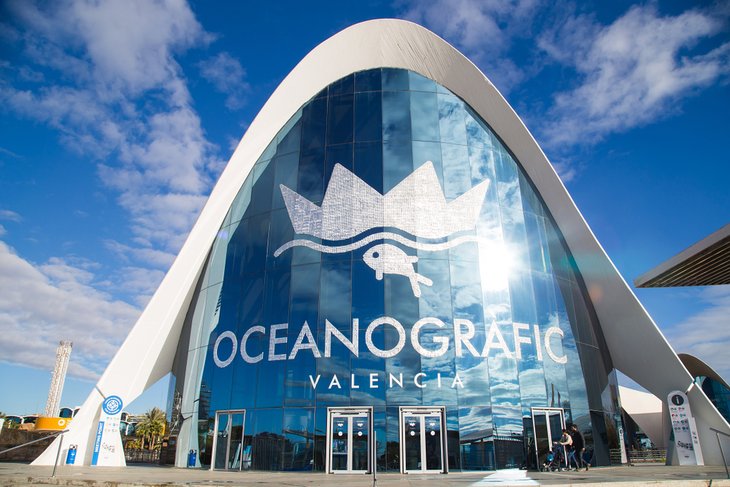
The striking building designed by architect Félix Candela as part of the City of the Arts and Sciences houses the largest aquarium in Europe. It is actually a complex of several buildings, each dedicated to one of the earth's most important marine ecosystems and environments: Wetlands, Temperate and Tropical, Oceans, Mediterranean, Antarctic, Arctic and Islands, and the Red Sea.
More than 500 different marine species are represented by 45,000 sea creatures, visible in nine towers that allow viewing as though visitors are underwater. The most dramatic of these is the tunnel, where visitors walk surrounded on both sides and overhead by swimming sharks. Elsewhere are beluga whales, sea lions, walruses, penguins, seals, sea turtles, and dolphins. Along with watching the sea life, you can experience mangrove swamps, marshlands, kelp forests, and other wetland environments with their native plant species. You can also dine in an underwater restaurant surrounded by a giant aquarium.
4 La Lonja de Seda
This magnificent Gothic structure was built in the 15th century to house the city's Silk Exchange, the marketplace where the famous Valencian silk was traded with merchants (to be sold all over Europe). One of the finest examples of Gothic civil architecture in Europe, the building resembles a medieval castle with its crenellated exterior and formidable tower. The facade features richly decorated doorways, decorative windows, and gargoyles (the grotesque carved creatures that function as waterspouts). The main hall has rich stellar vaulting borne on twisted columns. Visitors may climb the 144 stone steps of the tower's helical staircase. From the top of the tower, the views of the town are stunning. This attraction is open to the public daily. On Sundays, La Lonja is used as a venue for coin and stamp exhibitions.
5 Mercado Central
Opposite the Lonja, the Mercado Central is a spacious marketplace built in 1928. The Art Nouveau building is lavishly adorned with azulejos, decorative ceramics typical of the region. The hall contains 1,300 market stalls where vendors sell fresh fruits, vegetables, and food products from the Valencia region as well as other areas of Spain. The Iglesia de los Santos Juanes, a lovely 14th-century church is found immediately next to the market hall. This church has an exquisite Baroque facade and a gorgeous ceiling painting created by Palomino in 1700.
6 Parroquia de San Nicolás de Bari y San Pedro Mártir
Perhaps the most ornate of all Valencia's churches, this church dedicated to St. Nicholas of Bari and St. Peter the Martyr was founded in the 13th century on the site of a Roman sanctuary. It was renovated in the Gothic style in the 15th century, and its interior was finished in the 1690s in the Baroque style. The ornate decorations include gilded carvings and frescoes, which were designed by Antonio Palomino and show the life of Saint Nicholas, one of whose miracles is depicted in a stained glass rose window. This is the best example in Valencia of the original Gothic structure blending with later Baroque decoration. The neo-Gothic gate facing onto the Plaza de San Nicolás is a 19th-century addition.
7 Catedral de Valencia and Plaza de la Virgen
The Cathedral of Valencia is a glorious Gothic church with its emblematic Miguelete Tower soaring above the city. Built on the site of an old Moorish mosque, the cathedral was built in the 13th century and renovated in the 17th century. The exterior combines original Romanesque, Gothic, and Baroque architectural elements. Vibrant azure-hued tiles adorn the domes, which are a distinctive feature of Valencia's skyline.
Before entering, spend time admiring the facade. The splendid Puerta del Palaudoorway dates to the Romanesque era, while the Puerta de los Apóstoles(Apostles' Doorway) dates from the 15th century. The interior has an inspiring ambience with its majestic domed ceiling and a rose window illuminating the space. The various chapels are adorned with masterpieces of art, including paintings by Goya and a crucifix by Alonso Cano. A highlight of the sanctuary is the Chapel of the Holy Grail, with delicate vaulting and star motifs. This chapel illustrates a scene of the 12 apostles in Heaven and the coronation of the Virgin Mary. The most sacred object is a relic of the Holy Grail, an artifact from the first century AD said to be the goblet that Jesus used to perform the Holy Eucharist.
Among the oldest (it dates to Roman times) and loveliest of Valencia's many plazas, Plaza de la Virgen is bordered by several landmark buildings. At one side is the façade of the Cathedral of Santa Maria, next to it, the Basílica de la Virgen de los Desamparados, and across the square is the Palace of the Generalitat. The graceful Neptune fountain at its center is the work of Valencia sculptor Silvestre Edeta. Lighted at night, it's a favorite place for an evening stroll and for watching local life.
8 Iglesia de Santo Tomás y San Felipe Neri
With its dazzling blue-tiled dome, this beautiful church exemplifies the characteristic Mediterranean style of Valencia. Built in 1725, the Church of Saint Thomas and Saint Philip was listed as a National Historic Monument in 1982. The church has a fancifully decorated Baroque facade, and the architectural layout was modeled after the much-imitated Il Gesú church in Rome. The breathtaking interior has a spacious central nave lined with numerous side chapels. Catholic mass is held at the church daily. The monument is not open to the public for visit, but tourists may attend a mass to see the lovely sanctuary.
9 Bioparc Valencia
Valencia's zoo covers 25 acres north of the park created by the diversion of the River Turia's course. The landscape was created to house animals in as close to their native habitats as possible, and the zoo is especially known for its large collection of African animals.
The environment is designed so that visitors immediately feel as though they have been transported to Africa as they view animals almost barrier-free in landscapes typical to the savannah, Madagascar, and Equatorial Africa. Instead of separating different species, they coexist as they would in their native environments. On the savannah, for example, lions, giraffes, antelopes, and rhinoceros all live together as they do in the wild. Gorillas inhabit a dense equatorial forest, while hippopotami and crocodiles cool in the water. Bioparc is actively committed to sustainability of resources and to wildlife conservation, using solar panels to heat water, and recycling more than 95 percent of it.
10 Centre Arqueològic de l'Almoina (Almoina Archaeological Center)
Beneath a sleek modern building across from the cathedral you can step into a world that reaches back two millennia. Discovered during excavations between 1985 and 2005 are well-preserved remains of the first settlement here by the Romans, more than 2,000 years ago. There are remains of baths and other buildings, including a sanctuary, part of the forum portico, and a granary from this and later eras, including the Visigoth and Muslim periods. A baptistery and the apse of a church are from early Christian times, and a waterwheel, courtyard, pool, and fortifications remain from the Alcázar that stood here during the Islamic period. Together with historic pottery and other artifacts found underneath modern Valencia, the excavated area is considered one of Europe's best archaeological sites.
11 Palacio del Marqués de Dos Aguas (Ceramics Museum)
Near San Martín Church is the Palacio del Marqués de Dos Aguas, a spectacular 18th-century mansion. The Marquise Palace is renowned for its opulently decorated facade with an ornately carved alabaster doorway. This aristocratic palace now houses the National Ceramic Museum, which opened in 1947. The museum presents more than 5,000 examples of traditional pottery from Valencia and the surrounding area, azulejos (blue glazed ceramic) from Teruel, and faience (glazed earthenware) from Toledo and Seville. Other interesting items on display include ancient Greek, Roman, and Arab pottery; fine porcelain from China and Japan; and modern pieces by Mariano Benlliure and Picasso. A highlight of the collection is the fully equipped 19th-century Valencian kitchen featuring traditional tiles.
12 Museo de Bellas Artes
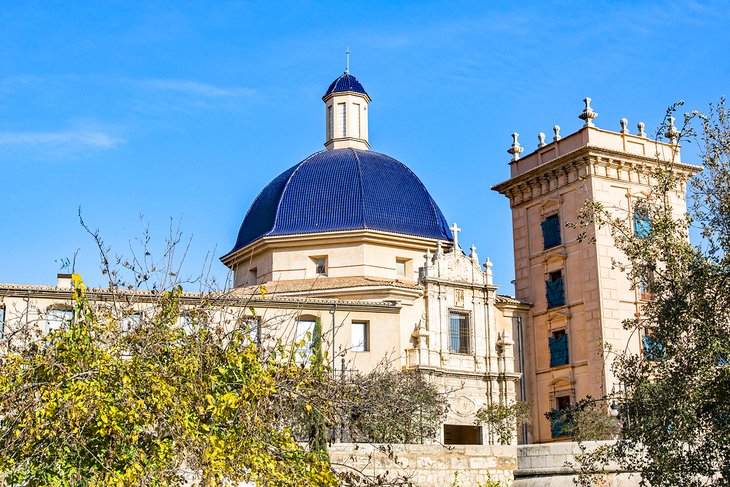
This Fine Arts Museum is a wonderful place to discover the artistic heritage of the Valencia region. The museum displays archeological findings, paintings, and sculptures. Most of the art collection focuses on works of Valencian artists, from the medieval era to modern times. The assortment of 19th- and 20th-century Valencian art is especially interesting. Among the museum's most precious works are the 14th-century altarpiece of Fray Bonifacio Ferrer (a Valencian friar) and a triptych of the Passion by Hieronymus Bosch. Highlights of the Valencian painting collection are the Last Supper and Saint Bruno by Francisco Ribalta and Saint Jerome by Jusepe de Ribera. Other Spanish masters represented include Diego Rodríguez de Silva y Velázquez, Bartolomé Esteban Murillo, El Greco, Francisco de Goya and Luis de Morales. Adjoining the Museum of Art is the Jardines del Real, a peaceful green space filled with statues, fountains, and walking paths.
13 Institut Valencia d'Art Moderne
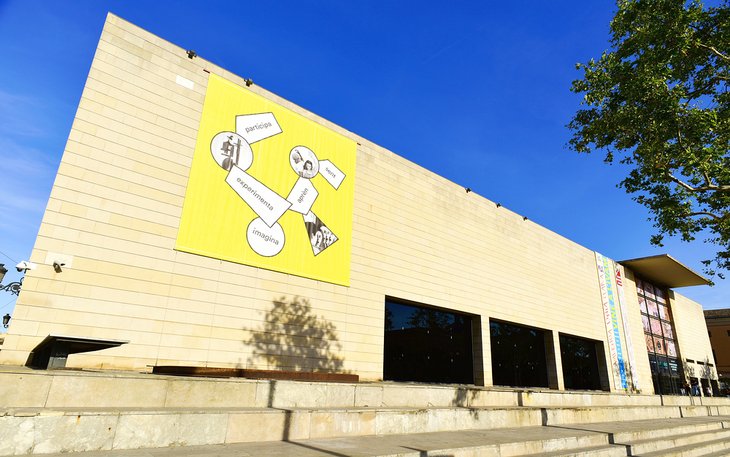
Housed in a surprising Space-Age building, the Valencia Institute of Modern Art is dedicated to the avant-garde art of the 20th century. The permanent collection covers all movements of modern art including Abstract and Pop Art, Informalism and New Figurative. The museum also hosts temporary exhibitions, lectures, and workshops. In striking contrast to the modern building, an underground room of the museum reveals ruins of Valencia's medieval city wall. The archeological remains were uncovered during construction of the museum.
14 Torres de Serranos (Ancient Town Gate)
This impressive landmark is a symbol of Valencia. The Torres de Serranos represents an ancient gate of the Old Town and recalls an era when the town was surrounded by defense walls. The town ramparts were built in the 14th century on top of Roman foundations. In 1930, the Serranos Towers were restored to their former glory. From these massive towers, visitors can take in sweeping views of the cityscape. The archway of the entrance gate features decorative Gothic details and two shields of the city.
(thanks to: www.planetware.com)
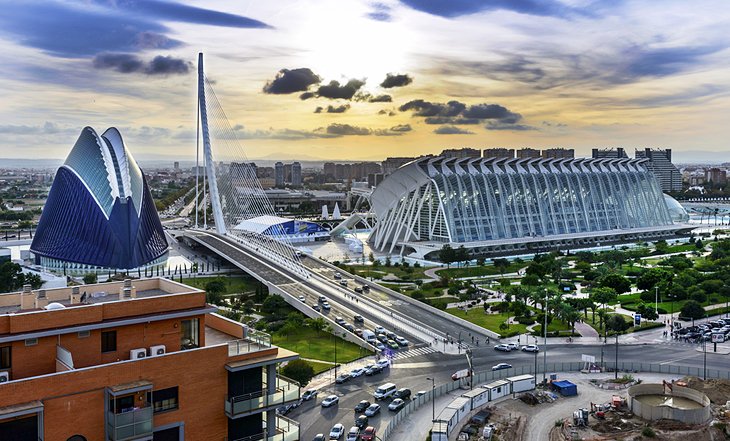
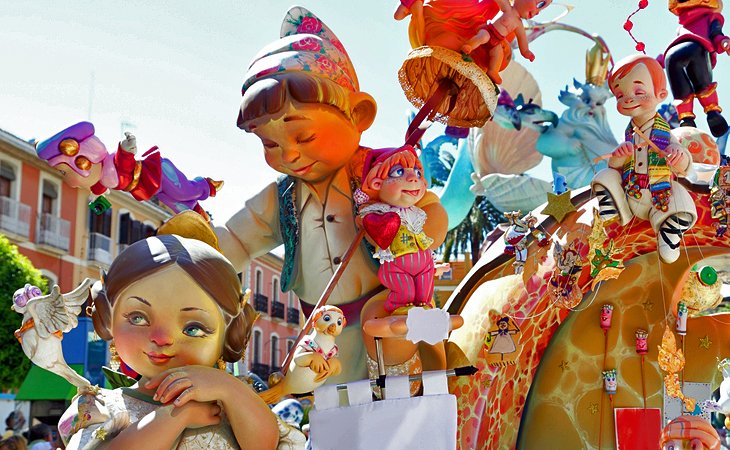
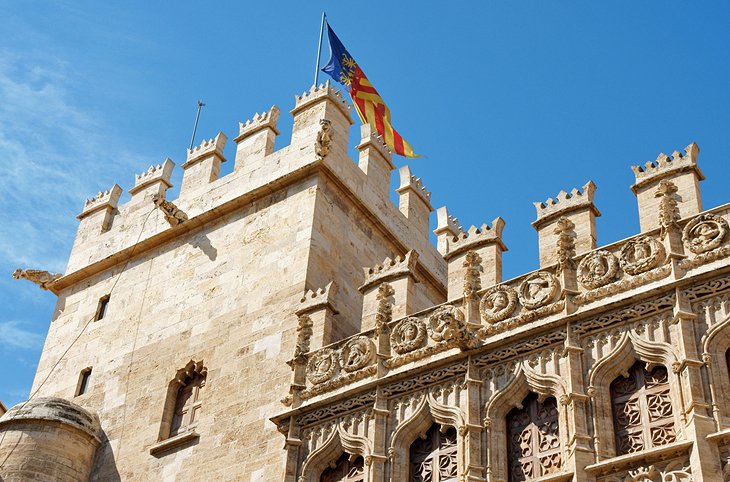
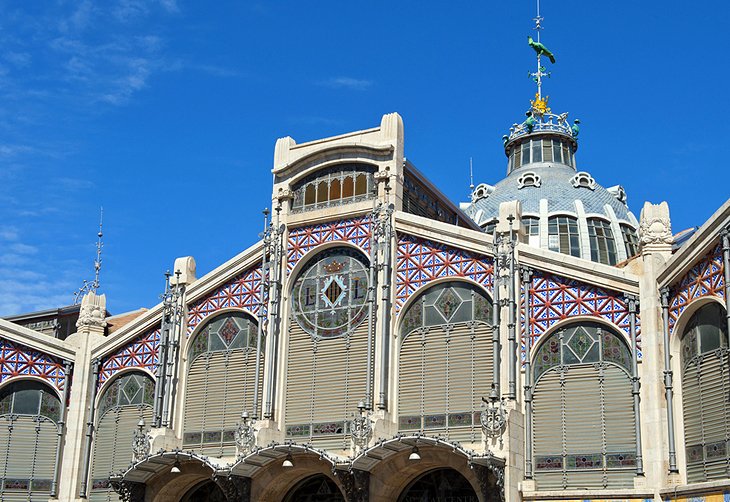
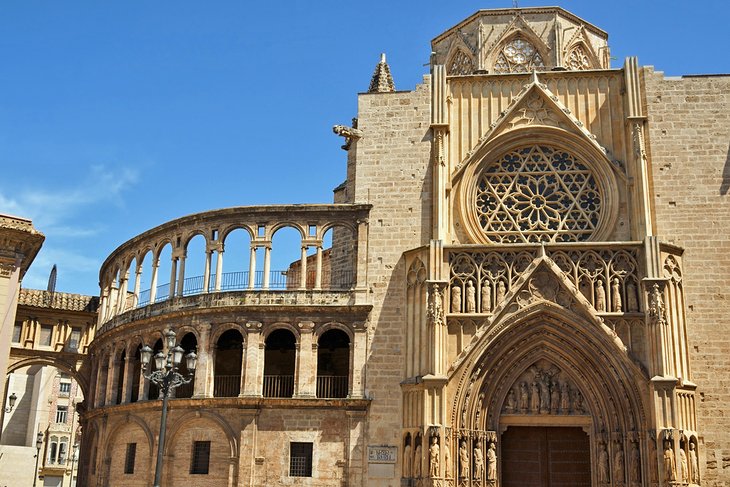
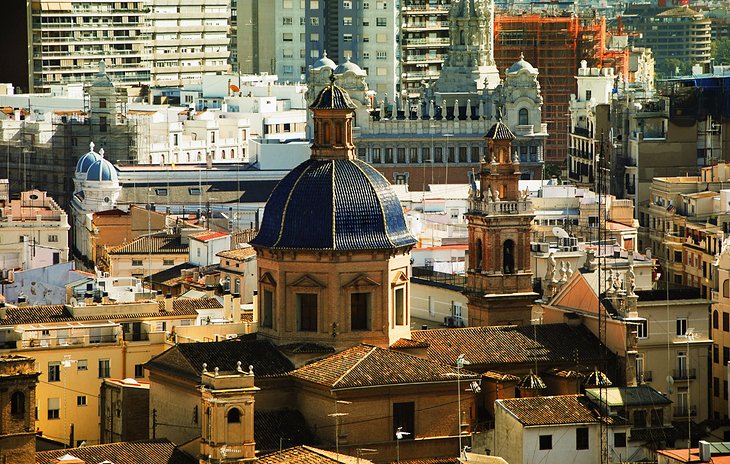

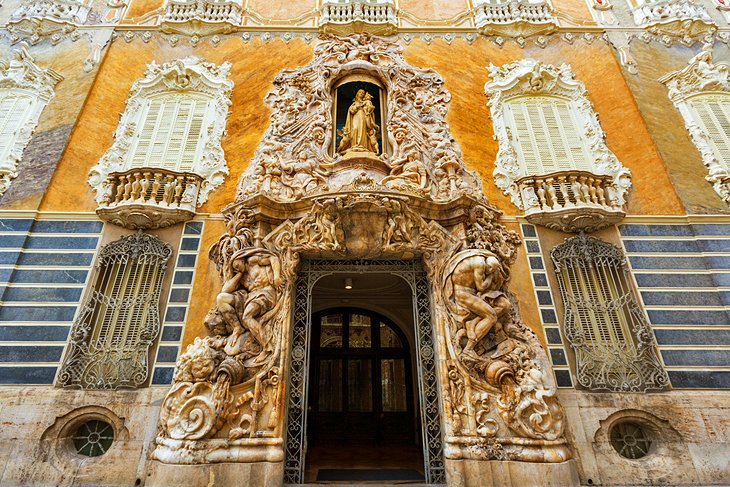
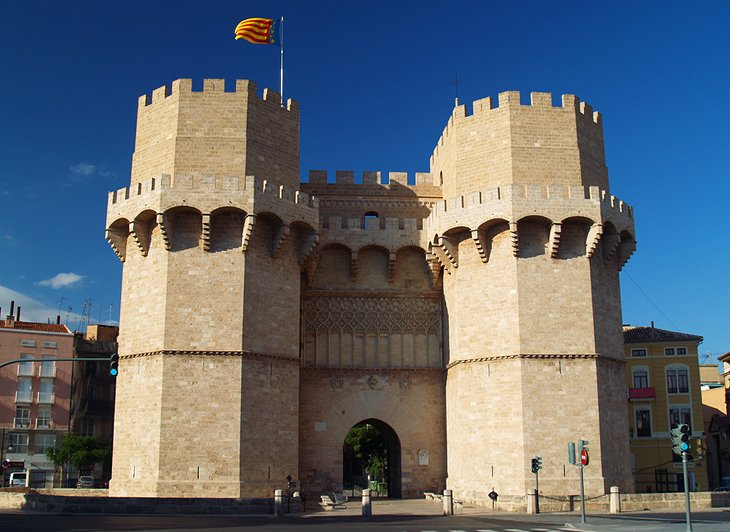
Comments
Post a Comment